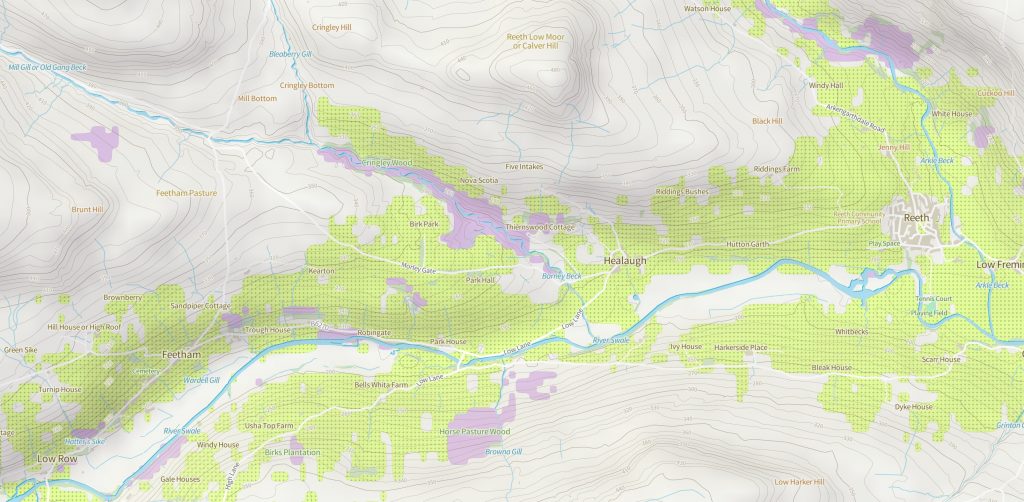
We all know that planting more trees will deliver significant environmental benefits. We also know that over-enthusiastic tree planting can have adverse consequences where other uses for land offer greater overall benefit.
An enlightened national tree planting strategy has to deal with a range of questions, amongst which two stand out: how many? and where?
I humbly propose that anyone who thinks they ‘know’ the answer is jumping the gun, but one thoughtful attempt to suggest an answer is being promoted by Friends of the Earth (FoE). FoE is campaigning to double woodland cover in the UK, and included with this, to double woodland cover in National Parks, from its current level of 15% to a target of 30%.
As part of this campaign, FoE has commissioned research to identify sites which present an opportunity for tree planting down to a very fine level of detail. If all ‘opportunities’ were planted, the Yorkshire Dales’ tree cover would rise from 4% to 28%, which would no doubt result in a very substantial change to the appearance and character of the Dales.
You can find out what impact this would have on your bit of Swaledale by clicking through to this map https://mapst.ac/foe/woodland-2020-10-01-recolored and entering your postcode. The areas in light green are FoE’s ‘opportunities’ for new woodland.
You’ll immediately wonder why these areas in particular have been picked out. This is mostly Grade 4 (and some Grade 3b) agricultural land, designated ‘poor quality’ by the Agricultural Land Classification system. FoE are at pains to point out that some of the land identified by this process is not best used for tree planting, and local consultation is an essential part of any tree planting scheme, as are the opinions and concerns (not to mention consent!) of those who make their living from the proposed land. One obvious criticism of this research is that the only human use it takes into consideration is the food production capacity of the land – amongst other matters it completely ignores ‘landscape value’, a concept which has significant legal standing within the planning system.
Nevertheless, FoE deserves considerable credit for making a constructive and considered contribution to an extremely important debate, and for steering away from the dogmatism that sometimes accompanies ‘grand solutions’ to environmental challenges.
I have found the map immensely useful for thinking about the practicalities and local impact of a large-scale tree planting programme, and hope you do too.
Further Reading
Missing in action: natural climate solutions in England’s national parks: